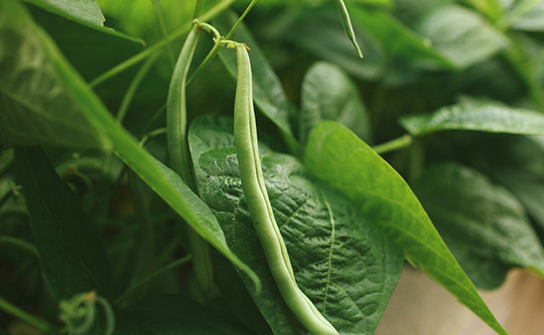 June-14-2023
June-14-2023
View: 2

If you're growing pole beans, install trellises, stakes, or bean poles at the time of planting. As the vines grow, gently guide them onto the support structures, enabling vertical growth.
Planting green beans on farms is an exciting and rewarding endeavor. These versatile legumes are not only easy to grow but also provide a delightful addition to any dish when harvested fresh from the garden. Whether you're a seasoned farmer or a beginner with a green thumb, this guide will walk you through the planting process for green beans, ensuring a successful and abundant harvest.
Choosing the Right Time: Green beans thrive in warm weather, so it's crucial to select the appropriate time for planting. Wait until the danger of frost has passed, typically in late spring or early summer, before sowing the seeds. This ensures that the soil temperature is optimal for germination and growth.
Preparing the Soil: Before planting, prepare the soil by removing any weeds, rocks, or debris. Green beans prefer well-drained soil with a slightly acidic to neutral pH level (around 6.0-7.0). Enhance the soil's fertility by incorporating organic matter, such as compost or well-rotted manure, which improves moisture retention and nutrient availability.
Sowing the Seeds: Green beans can be sown directly in the garden, as they don't transplant well. Create rows or mounds with a spacing of 12-18 inches between each row or mound. Plant the seeds at a depth of 1-2 inches, placing them about 2-4 inches apart within the row or mound. Cover the seeds gently with soil and lightly tamp it down.
Watering and Care: After planting, provide adequate moisture to the seeds by watering them thoroughly. Maintain consistent moisture throughout the growing season, ensuring the soil remains evenly moist but not waterlogged. Avoid overhead watering to prevent the development of fungal diseases. Mulching around the plants helps retain moisture, suppress weeds, and regulate soil temperature.
Supporting Pole Beans: If you're growing pole beans, install trellises, stakes, or bean poles at the time of planting. As the vines grow, gently guide them onto the support structures, enabling vertical growth. This not only saves space but also promotes better air circulation, reducing the risk of diseases.
Pest and Disease Management: Green beans are generally resilient, but occasional pests and diseases may pose a threat. Monitor the plants regularly and take necessary action at the first sign of trouble. Common pests include aphids, bean beetles, and cutworms. Employ organic pest control methods, such as introducing beneficial insects or using insecticidal soaps. Preventive measures, such as crop rotation and practicing good garden hygiene, help minimize disease incidence.
Harvesting: Green beans are typically ready for harvest within 50-60 days, depending on the variety. The pods should be four to six inches long, firm, and vibrant in color. Harvesting is a simple process of gently pulling or snapping the pods off the plant. Avoid excessive force to prevent damage to the plant.
Conclusion: Planting green beans on farms is an enjoyable and fulfilling experience. With the right timing, soil preparation, and care, you can cultivate a thriving crop that yields an abundant harvest of delicious and nutritious legumes. Whether you choose bush beans or pole beans, the satisfaction of growing and harvesting green beans will be evident as you savor their crispness and vibrant flavors straight from the garden. So roll up your sleeves, dig into the soil, and embark on this wonderful journey of planting green beans on your farm.